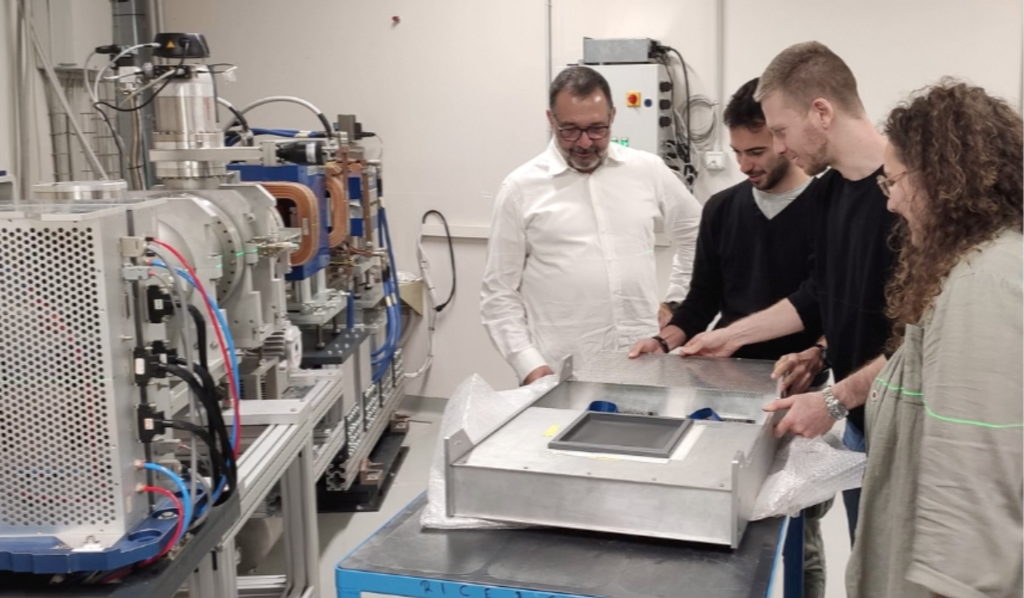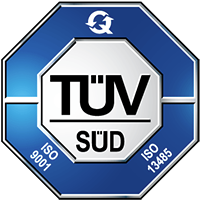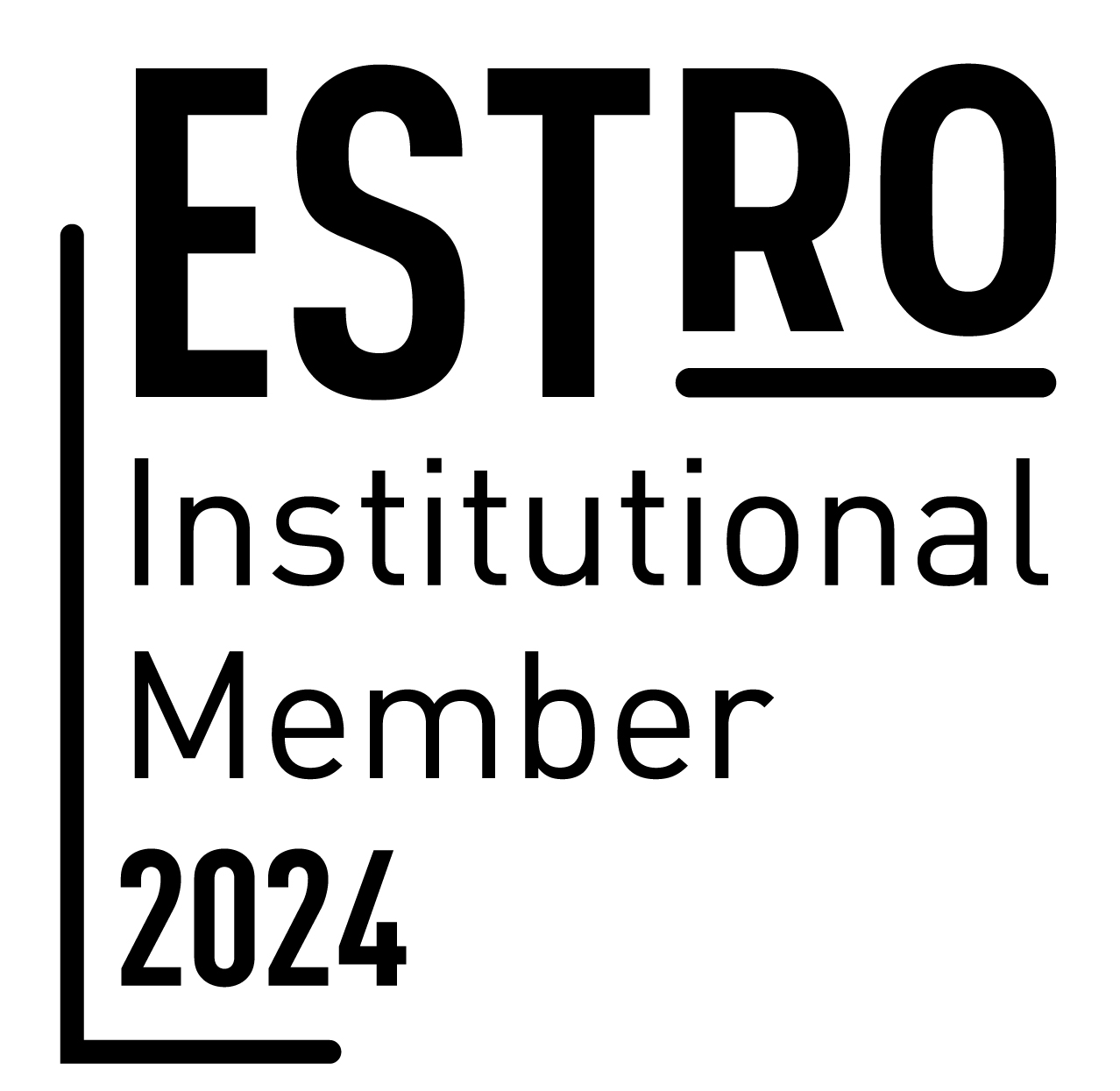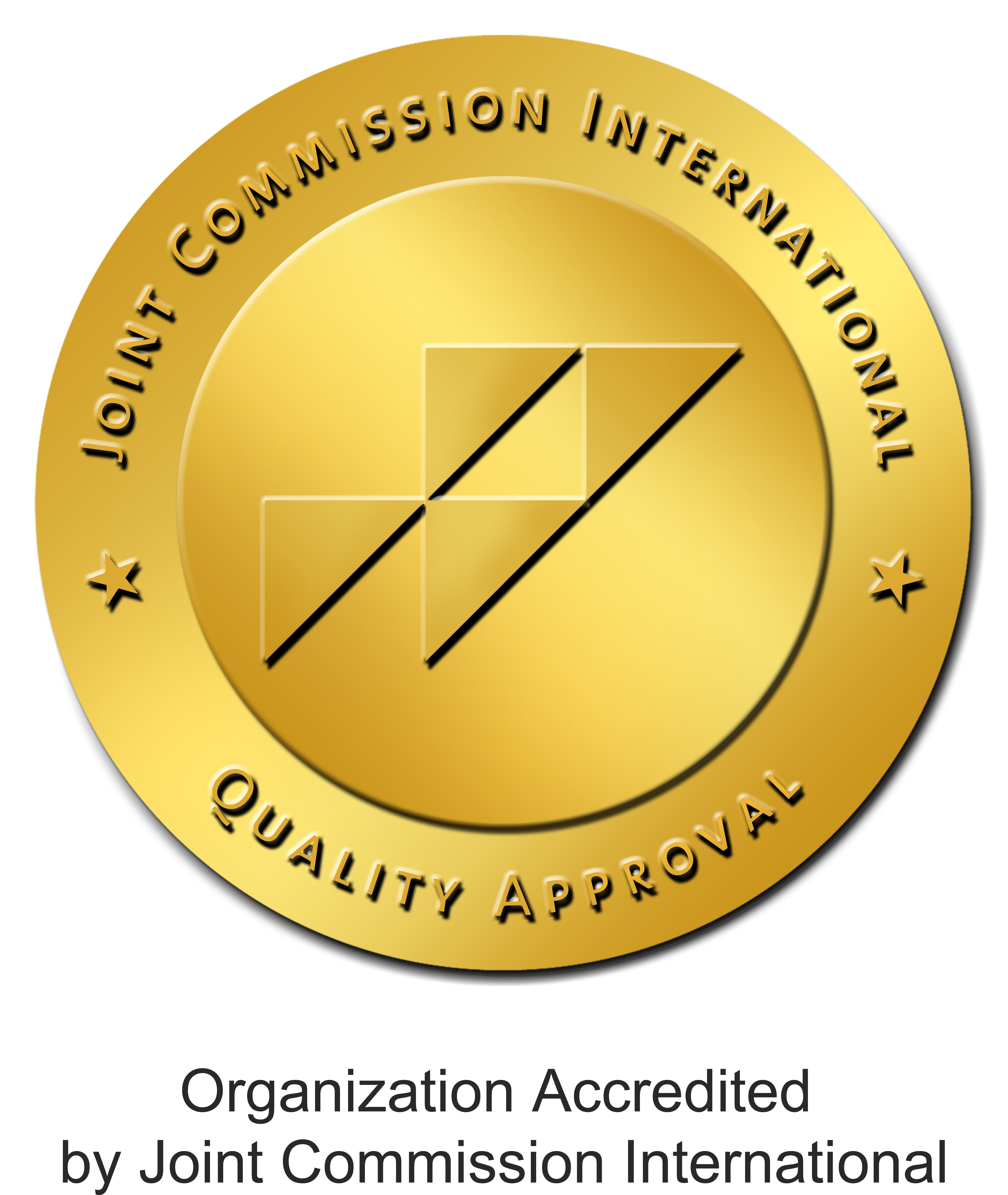
Research projects
Research projects
Research and training projects
Since its was founded, CNAO has been involved in national and international research and training projects. The ENLIGHT (European Network for Light Ion Hadron Therapy) platform was created in 2002. It is a network of over 300 members from 20 European countries. It was created to bring together professionals who, although having different specialisations (clinicians, physicists, biologists, engineers), are united by experiences and interests in therapies that involve using particles.
CNAO took part in two of the ENLIGHT platform projects:
- PARTNER (Particle Training Network for European Radiotherapy)
- ULICE (Union of Light Ion Centres in Europe)
As well as in some Horizon 2020 projects:
- MEDICIS - PROMED (ended in 2019 with the completion of the research of the young researcher ESR who developed a GPU tool for physical and biological dose recalculations, whose original results are contained in the doctoral thesis discussed in January 2020)
- OMA (Optimization of Medical Accelerators ended on January 31, 2020 with the discussion of the doctoral thesis in Engineering of the young researcher who successfully carried out his research activity in CNAO in the group of Control Systems)
CNAO plays an active role as promoter in these two projects.
Finally, CNAO is the promoter of two regional operational development projects: OTERO and INSPIRIT
OTERO ended in June 2019 with the complete and satisfactory implementation of the sequencer, a device able to reduce the delivery time of the hadrontherapy beam and the physical dose, that has an easy interchangeability with the existing plant, and allows to further develop the accelerator, providing the optimization mechanisms required. The collaboration with the INFN inside OTERO allowed to contribute to the instrumentation available to the experimental research line at CNAO with a device (Dose Profiler) able to measure the dose profile released in a volume to be irradiated. The Dose Profiler can be further optimized from the point of view of engineering allowing a possible technology transfer.
INSPIRIT is a project coordinated by CNAO, presented in March 2019 as part of the Call “HUB Research and Innovation”, within the Regional Operational Programme of Regione Lombardia 2014-2020, and admitted to funding by decree of 6 October 2019.
HITRIplus - Heavy Ion Therapy Research Integration plus has gathered a consortium engaging all relevant stakeholders and for the first time bringing together all four European ion therapy centres with leading EU industries, academia, and research laboratories. They all share the ambition to jointly build a strong
pan-European Heavy Ion Therapy Research Community.
The goal of Heavy Ion Therapy Research Integration plus (HITRIplus) is to integrate and propel biophysics and medical research on cancer treatment with heavy ions beams while jointly developing its sophisticated instruments.
Cancer is a central health problem for our society. Heavy ion beams irradiate tumours by focussing on the ill tissue while sparing the healthy part around, more effectively than any other irradiation treatment. The wider objective of HITRIplus is to provide radiation oncologists with a cutting-edge tool to treat the fraction of tumours that are not curable with X-rays or protons or have better survival rates or lower recurrences with ions.
For this major initiative, HITRIplus has gathered a consortium engaging all relevant stakeholders and for the first time bringing together all four European ion therapy centres with leading EU industries, academia, and research laboratories. They all share the ambition to jointly build a strong pan-European Heavy Ion Therapy Research Community. A strategic partner is the South East European International Institute for Sustainable Technologies, which federates eight countries in South East Europe with the ambition to build a next generation heavy ion Research Infrastructure in the area, to boost research and cooperation in a region trying to rebuild after a troubled past.
HITRIplus Transnational Access will integrate and open to external researchers the experimental programme of the five European facilities providing therapeutic ion beams. Its Networks will structure and foster the research on heavy ion therapy, including clinical and pre-clinical research. Joint Research Activities will develop new accelerator and beam delivery technologies to extend the reach of the present generation centres and to define a new European reference design, at lower cost and dimensions, to make cancer ion therapy more accessible and to open new markets to European industry.
HITRIplus list of participants
HITRIplus Work packages organization
The INSPIRIT project involves the implementation of the irradiation facility of CNAO, providing it with an innovative source capable of producing new ionic species, such as oxygen, helium and lithium, which will be accelerated by the synchrotron, addressed in the experimental room and made available for research and clinical activities.
The project involves a Research Organization, INFN, with Pavia and Catania Sections, and the PMI Hifuture, and aims as a long-term objective to provide Lombardia territory with an adequate research structure.
This will be a unique European opportunity for experimental and industrial research in nuclear physics, particle physics, atomic physics, plasma and antimatter, radiation hardness for microelectronics, aerospace and spectrometry, biology and biomedical sciences.
At the same time, within the framework of the funding obtained, will be implemented the infrastructure dedicated to research (laboratory and preparation facilities) in order to adapt it for a greater number of users. INSPIRIT will then expand the potential of CNAO in the field of research, with the longer-term aim of introducing new ionic species into clinical practice for the treatment of tumor. The availability of these bundles allows the customization of the therapy: a treatment plan that maximizes the therapeutic effectiveness depending on the characteristics of the tumor and the patient itself.
The simultaneous use of the machine, both for hadrontherapy treatments and for clinical and industrial research activities, will represent a significant step for CNAO accelerator complex, that constitutes the state of the art in its field and is configured as a significant example of service innovation.
THE PARTNER PROJECT
The 4-year project launched in 2008 was created to research on ionic therapies and to improve the training of professionals involved in hadrontherapy, a technique that is more and more widely used.
The purpose of the project was to train researchers coming from different countries on how to improve the efficiency of ion therapy for treating cancer.
CNAO, as a project participant, hosted two radiation oncologists from India and Singapore and a physicist from Colombia.
In particular, radiation oncologists focused on training on the clinical aspects of hadrontherapy, the definition of new clinical studies and the identification of new potential indications on hadrontherapy on the basis of epidemiological data.
The physicist was involved in the design of an innovative carbon ion gantry in collaboration with the ULICE team.
THE ULICE PROJECT
This project was launched in 2009 with a total duration of 4 years and was coordinated by CNAO. It was made up of 20 leading European research centres to respond to the need for greater access to research facilities on particle therapies.
The project was based on three pillars:
- joint research activity - focused on developing new tools and protocols: design of a gantry, enhancing 4D dose administration, adaptive treatment plan, patient selection mechanisms throughout the European Community, developing a database of specific tumours that can be best treated using carbon ions.
- Networking - to improve collaboration between the facilities and the research communities that intend to work with research centres.
- Transnational access - thanks to clinical trial programmes so that researchers have access to the facilities and can conduct experiments.
The purpose was to open the active hadrontherapy centres in Europe to the scientific community, providing them with resources and facilities in order to spread an innovative technique to treat tumours.
In addition to general coordination, CNAO was responsible for coordinating the research and development activities related to an innovative ion gantry, raising consciousness and;informing local and European authorities on what hadrontherapy is, defining procedures to standardise the protocols that facilitate;access to hadrontherapy installations, and comparing research results.
For further details on the projects, visit the website http://enlight.web.cern.ch/
As part of the European Horizon 2020 programme, aimed at research and innovation, CNAO is the beneficiary of two projects.
THE MEDICIS-PROMED PROJECT (coordinator of the project: CERN of Geneva)
The MEDICIS-PROMED project The project, launched in 2015 for a total duration of 4 years, aims at training a new generation of 15 entrepreneurial scientists who will spread the different skills through private institutions and hospitals. The purpose of this is to quickly commercialise new equipment and radiopharmaceuticals to treat oncological pathologies.
The main purpose of this project is to provide a wide range of radioisotopes, some of which can be only produced at CERN, intended for applications in hospitals and research centres across Europe, or to perform hadrontherapy treatments using PET imaging with carbon ions. Radioisotopes are already widely used by the medical community for imaging, diagnosis and radiotherapy. However, many do not combine the most appropriate physical and chemical properties and, in some cases, a different type of radiation could be better suited.
In November 2015, a Korean physicist was recruited at CNAO to conduct research aimed at a personalised hadrontherapy treatment with PET isotope C-11C.
THE OMA PROJECT (coordinator of the project: University of Liverpool)
The project was launched in 2016 for a total duration of 4 years.
It is coordinated by the University of Liverpool and CNAO is one of its 14 beneficiaries. The project joins universities, research centers and ion beam treatment facilities with industry partners to train 15 young researchers for the development of advanced technologies and the use of innovative imaging techniques.
As part of this project, two research and training programmes have begun and the two students, included in the doctoral programme of the Bioengineering Department at the University of Pavia, are obtaining the first results of their research at CNAO, in particular for 4D tumour tracking and the development of a data exchange system in an ion accelerator for medical use.
THE OTERO PROJECT
This project was promoted by CNAO in collaboration with INFN; it was launched in March 2017 to last for 20 months.
The OTERO project aims to create a sequencer prototype, which will be built, bench tested, installed and verified on the experimental beamline, and will cut down the delivery time of the hadrontherapy beam and the physical dose. At the same time, this synchronised transmission of information will reduce downtimes between one treatment and the next and, will also guarantee the possibility of delivering beams at the experimental room (through the dedicated beamline). The availability of a beamline for research, implemented by the new sequencer, will allow Italian and foreign researchers to be able to irradiate cellular samples, tissues, small animals, printed circuit boards, new types of detectors in particle physics, for hadrontherapy, for monitoring dose distribution on-line, and for measuring devices for hadron imaging.













